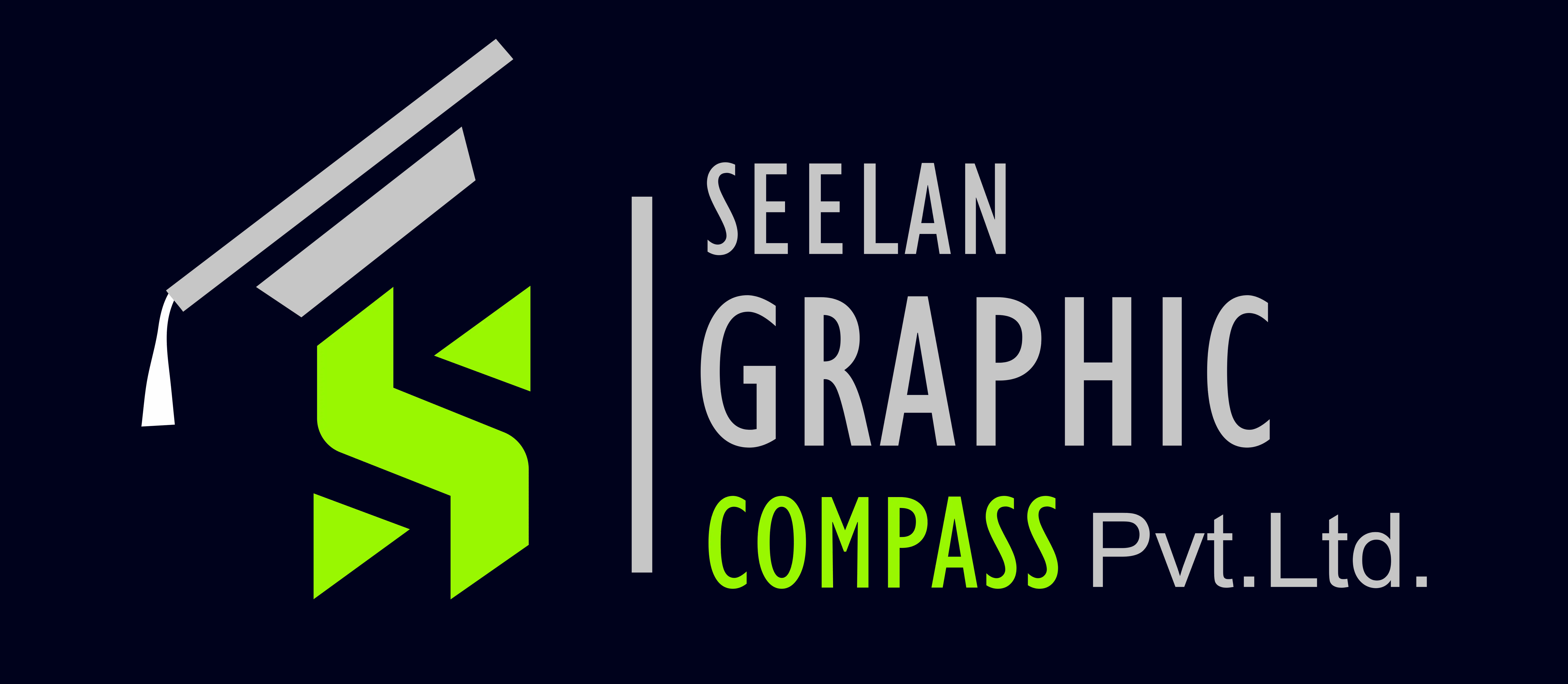Search Engine Optimization
SEO Best Practices for New Websites

Launching a new website? Use this end-to-end SEO playbook to get discovered by search engines—and by the audience that matters. From technical setup to content strategy, structured data, and performance, this guide helps you launch right and grow faster.
Tip: The examples below use seelangraphics.com. Adjust to your stack
and deployment. Submit this URL to Google Search Console after
publishing.
Table of Contents
- Foundation: Site Structure, Indexing, and Crawl Control
- On‑Page SEO Essentials
- Structured Data and Rich Results
- Performance and Core Web Vitals
- Analytics, Search Console, and Tracking
- Content Strategy: Pillars, Clusters, and a 90‑Day Calendar
- Internal Linking and Navigation
- Off‑Page: Links, Citations, and PR
- International and Local SEO
- Pre‑Launch and Post‑Launch Checklists
- FAQ
1) Foundation: Site Structure, Indexing, and Crawl Control

- Choose a primary domain and stick to it (prefer www or non‑www, then 301 redirect the other).
- Enforce HTTPS site‑wide.
- Keep URLs short, lowercase, hyphen‑separated. Example: /services/branding/ not /Services/Branding?id=12
- Use a shallow structure: homepage → pillar → cluster → article.
robots.txt
User-agent: *
Disallow: /cart/
Disallow: /checkout/
Disallow: /search?
Allow: /
Sitemap: https://www.seelangraphics.com/sitemap.xmlXML Sitemap
<?xml version="1.0" encoding="UTF-8"?>
<urlset xmlns="http://www.sitemaps.org/schemas/sitemap/0.9">
<url><loc>https://www.seelangraphics.com/</loc><lastmod>2025-08-14</lastmod></url>
<url><loc>https://www.seelangraphics.com/blogs/</loc><lastmod>2025-08-14</lastmod></url>
<url><loc>https://www.seelangraphics.com/blogs/seo-best-practices-for-new-websites/</loc><lastmod>2025-08-14</lastmod></url>
</urlset>Force HTTPS and one host (choose one)
Apache (.htaccess)
RewriteEngine On
RewriteCond %{HTTPS} !=on [OR]
RewriteCond %{HTTP_HOST} ^seelangraphics\.com$ [NC]
RewriteRule ^(.*)$ https://www.seelangraphics.com/$1 [R=301,L]Nginx
server {
listen 80;
server_name seelangraphics.com www.seelangraphics.com;
return 301 https://www.seelangraphics.com$request_uri;
}2) On‑Page SEO Essentials
Quick reference: On‑page elements
| Element | Recommendation | Notes |
|---|---|---|
| Meta Title | 50–60 chars | Primary keyword near start, brand at end |
| Meta Description | 140–160 chars | Benefit‑led, action verb, secondary keyword |
| H1 | 1 per page | Human‑readable, not stuffed |
| H2–H3 | Logical outline | Use related entities/topics |
| URL | 3–5 words | Lowercase, hyphens |
| Alt Text | 5–12 words | Describe image purpose/context |
| Internal Links | 3–8 per page | Use descriptive anchors |
| Word Count | As needed | Depth over length; answer user intent fully |
Example head markup
<head>
<title>Affordable Branding Services for Startups | Seelan Graphics</title>
<meta name="description" content="Logo design, brand strategy, and identity systems that help startups stand out and grow. Get a custom brand in 2–3 weeks." />
<link rel="canonical" href="https://www.seelangraphics.com/services/branding/" />
<meta name="viewport" content="width=device-width, initial-scale=1" />
<meta name="robots" content="index,follow" />
<meta property="og:type" content="website" />
<meta property="og:title" content="Affordable Branding Services for Startups" />
<meta property="og:description" content="Logo design, brand strategy, and identity systems that help startups stand out." />
<meta property="og:image" content="https://www.seelangraphics.com/metatagImage.webp" />
</head>Content framework for new pages
- Open with a clear promise + who it’s for.
- Answer the top 3 search intents within the first 300 words.
- Add a scannable H2/H3 outline, images/diagrams, and a clear CTA.
- Include FAQs that mirror “People Also Ask”.
3) Structured Data and Rich Results (JSON‑LD)
Add JSON‑LD via your theme/head where possible, then validate with Google’s Rich Results Test. Below are common patterns you can reuse.
Organization
<script type="application/ld+json">
{
"@context":"https://schema.org",
"@type":"Organization",
"name":"Seelan Graphics",
"url":"https://www.seelangraphics.com",
"logo":"https://www.seelangraphics.com/assets/Logo_a1-BHmIMXeN.webp",
"sameAs":[
"https://www.instagram.com/seelangraphics/",
"https://www.facebook.com/profile.php?id=61561991840263",
"https://www.youtube.com/@SeelanGraphicCompassPvtLtd",
"https://www.linkedin.com/company/seelan-graphic-compass-pvt-ltd",
"https://jsdl.in/RSL-JFV1744289662"
]
}
</script>
Website + SearchAction (optional if you have on‑site search)
<script type="application/ld+json">
{
"@context":"https://schema.org",
"@type":"WebSite",
"url":"https://www.seelangraphics.com/",
"name":"Seelan Graphics",
"potentialAction":{
"@type":"SearchAction",
"target":"https://www.seelangraphics.com/search?q={search_term_string}",
"query-input":"required name=search_term_string"
}
}
</script>Breadcrumbs
<script type="application/ld+json">
{
"@context":"https://schema.org",
"@type":"BreadcrumbList",
"itemListElement":[
{"@type":"ListItem","position":1,"name":"Home","item":"https://www.seelangraphics.com/"},
{"@type":"ListItem","position":2,"name":"Blogs","item":"https://www.seelangraphics.com/blogs/"},
{"@type":"ListItem","position":3,"name":"SEO Best Practices for New Websites","item":"https://www.seelangraphics.com/blogs/seo-best-practices-for-new-websites/"}
]
}
</script>Article
<script type="application/ld+json">
{
"@context":"https://schema.org",
"@type":"Article",
"headline":"SEO Best Practices for New Websites",
"author":{"@type":"Organization","name":"Marketing Team"},
"datePublished":"2025-08-14",
"image":["https://www.seelangraphics.com/metatagImage.webp"],
"mainEntityOfPage":"https://www.seelangraphics.com/blogs/seo-best-practices-for-new-websites/"
}
</script>FAQ (rich results)
<script type="application/ld+json">
{
"@context":"https://schema.org",
"@type":"FAQPage",
"mainEntity":[
{"@type":"Question","name":"How long does SEO take for a new site?","acceptedAnswer":{"@type":"Answer","text":"Early traction in 4–8 weeks; compounding growth in 3–6 months with consistent content and links."}},
{"@type":"Question","name":"Do I need both a sitemap and robots.txt?","acceptedAnswer":{"@type":"Answer","text":"Yes. robots.txt guides crawlers; the sitemap lists canonical URLs you want indexed."}}
]
}
</script>4) Performance and Core Web Vitals
Aim for: LCP < 2.5s • CLS < 0.1 • INP < 200ms
| Metric | Pass Threshold | What to fix |
|---|---|---|
| LCP | < 2.5s | Compress hero image, preload font/hero, reduce server TTFB |
| CLS | < 0.1 | Reserve image/ads space, avoid layout shifts |
| INP | < 200ms | Reduce JS, defer non‑critical, limit heavy third‑parties |
Preconnect and Preload
<link rel="preconnect" href="https://fonts.gstatic.com" crossorigin>
<link rel="preload" as="image" href="https://www.seelangraphics.com/metatagImage.webp" imagesizes="100vw">Responsive images (picture)
<picture>
<source type="image/avif" srcset="/images/hero-800.avif 800w, /images/hero-1600.avif 1600w" sizes="100vw">
<source type="image/webp" srcset="/images/hero-800.webp 800w, /images/hero-1600.webp 1600w" sizes="100vw">
<img src="/images/hero-1600.jpg" alt="Creative team planning website SEO roadmap" width="1600" height="900" loading="lazy" decoding="async" style="width:100%;height:auto;border-radius:12px">
</picture>Lazy‑load images with IntersectionObserver
<script>
document.addEventListener('DOMContentLoaded',function(){
if('IntersectionObserver' in window){
const imgs=[...document.querySelectorAll('img[data-src]')];
const io=new IntersectionObserver(entries=>{
entries.forEach(e=>{
if(e.isIntersecting){
const img=e.target;
img.src=img.dataset.src;
img.removeAttribute('data-src');
io.unobserve(img);
}
});
});
imgs.forEach(img=>io.observe(img));
}
});
</script>Minify critical CSS, defer non‑critical JS
<link rel="preload" href="/assets/critical.css" as="style" onload="this.onload=null;this.rel='stylesheet'">
<noscript><link rel="stylesheet" href="/assets/critical.css"></noscript>
<script defer src="/assets/app.js"></script>5) Analytics, Search Console, and Tracking
Search Console verification (HTML tag)
<meta name="google-site-verification" content="YOUR_TOKEN_HERE" />GA4 gtag (site‑wide)
<script async src="https://www.googletagmanager.com/gtag/js?id=G-XXXXXXX"></script>
<script>
window.dataLayer = window.dataLayer || [];
function gtag(){dataLayer.push(arguments);}
gtag('js', new Date());
gtag('config', 'G-XXXXXXX', { anonymize_ip: true });
</script>Track key events (CTA clicks)
<script>
document.addEventListener('click',function(e){
const a=e.target.closest('a.cta, a.btn');
if(a && typeof gtag === 'function'){
gtag('event','cta_click',{label:a.textContent,location:window.location.pathname});
}
});
</script>6) Content Strategy: Pillars, Clusters, and a 90‑Day Calendar
Pillar → Cluster example for a design/marketing site
-
Pillar: “Website SEO for Small Businesses”
- Cluster: “Keyword Research Basics”
- Cluster: “On‑Page SEO Checklist”
- Cluster: “Image SEO (Alt, Formats, Compression)”
- Cluster: “Technical SEO for Non‑Developers”
- Cluster: “Local SEO for Service Brands”
Keyword mapping template (example)
| URL | Primary KW | Secondary KWs | Search Intent | Notes |
|---|---|---|---|---|
| /blogs/seo-best-practices-for-new-websites/ | seo best practices | new website seo, launch seo checklist | Informational | Long‑form guide |
| /services/seo/ | seo services | technical seo, local seo services | Transactional | Service page |
| /blogs/keyword-research/ | keyword research | keyword tools, search intent | Informational | Tutorial |
90‑Day publishing plan
| Week | Focus | Deliverables |
|---|---|---|
| 1–2 | Foundation | About, Services, 1 Pillar, 1 Cluster, set GSC/GA4 |
| 3–4 | Depth | 2 Clusters, 1 case study, internal linking |
| 5–6 | Expertise | Add FAQs, update pillar, guest post outreach |
| 7–8 | Authority | 2 Clusters, 1 downloadable guide/lead magnet |
| 9–10 | Optimization | Refresh metadata, add schema, speed tweaks |
| 11–12 | Scale | 3 Clusters, start email capture flow |
7) Internal Linking and Navigation
- Use descriptive anchors: “brand strategy pricing” not “click here”.
- Link down (pillar → cluster), up (cluster → pillar), and across (cluster ↔ cluster).
- Add related content blocks around 60% scroll depth.
Related posts block (HTML)
<section aria-label="Related articles">
<h2>Related reading</h2>
<ul>
<li><a href="/blogs/on-page-seo-checklist/">On‑Page SEO Checklist</a></li>
<li><a href="/blogs/image-seo/">Image SEO: Formats, Alt, and Speed</a></li>
<li><a href="/blogs/technical-seo-basics/">Technical SEO for Non‑Developers</a></li>
</ul>
</section>8) Off‑Page: Links, Citations, PR
- Secure foundational links: social profiles, design directories, local citations.
- Publish data or visuals people quote (original stats, templates, checklists).
- Pitch relevant podcasts and newsletters with a unique angle.
- Avoid spammy link exchanges or paid link schemes.
9) International and Local SEO
hreflang (multi‑region/multi‑language)
<link rel="alternate" href="https://www.seelangraphics.com/" hreflang="en" />
<link rel="alternate" href="https://www.seelangraphics.com/in/" hreflang="en-IN" />
<link rel="alternate" href="https://www.seelangraphics.com/" hreflang="x-default" />Google Business Profile (local)
- Consistent NAP across site and citations.
- Add categories, services, photos, and Q&A.
- Use UTM on website and appointment links.
10) Pre‑Launch and Post‑Launch Checklists
Pre‑Launch (tech)
0 / 9
Content
0 / 4
Post‑Launch (first 30–60 days)
0 / 5
11) FAQ — SEO for New Websites
How do I get my new website indexed quickly?
- Remove any noindex/meta robots blocking and allow crawling in robots.txt.
- Generate and submit your XML sitemap in Google Search Console (GSC).
- Use “URL Inspection” in GSC and click “Request indexing” for priority pages.
- Link new pages from your homepage/nav and related pages to help discovery.
- Avoid staging/demo URLs being crawled; block or password‑protect them.
Which pages are essential at launch for SEO?
- Home, About, Contact
- Service pages (one page per core service) + a Services overview
- Blog hub (/blogs/) + 1 pillar article + 2–3 cluster posts
- Privacy Policy, Terms (trust + compliance)
- Optional: Location pages (if local), Case studies/Portfolio
How should I choose and map keywords for a new site?
- Start with customer problems and competitor pages; confirm with search volume.
- Map one primary keyword per URL; add 2–4 closely related secondary terms.
- Prioritize bottom‑of‑funnel terms for service pages and long‑tail queries for early blog wins.
- Avoid keyword cannibalization by ensuring each page has a distinct intent.
What’s the right URL structure for a new website?
- Short, lowercase, hyphen‑separated (e.g., /blogs/seo-best-practices/).
- Choose trailing slash or not—and be consistent.
- Avoid dates in blog slugs if content is evergreen.
- Pick one host (www or non‑www) and 301 redirect the other.
Can I change URLs later without hurting SEO?
- Yes—add 301 redirects from old to new URLs and update all internal links.
- Update the XML sitemap and canonicals; avoid redirect chains.
- Monitor 404s and coverage in GSC after the change.
Which structured data should I add on day one?
- Organization, WebSite (with SearchAction if you have site search), and BreadcrumbList.
- Article for posts and service pages (where applicable); FAQPage for FAQs.
- If you serve locally, add LocalBusiness on your Contact/Location page.
- Validate using Google’s Rich Results Test.
How do I optimize images and media for SEO?
- Use modern formats (AVIF/WebP), responsive srcset, and width/height to prevent layout shift.
- Write descriptive, purpose‑led alt text; compress to the smallest acceptable size.
- Lazy‑load below‑the‑fold assets and preload the hero image if it’s your LCP element.
What should I track in the first 90 days?
- GSC: Coverage (errors/warnings), Performance (queries, CTR), Core Web Vitals.
- GA4: Conversions (form submits, WhatsApp/phone clicks), engaged sessions, top landing pages.
- Links: Foundational citations/profiles and relevant partner/industry links.
How often should I publish to build momentum?
- Target 1–2 quality posts per week, clustered around your pillar topics.
- Refresh/expand existing content every 60–90 days based on GSC query data.
- Interlink new posts to pillar pages and relevant service pages.
 Seelan Graphic Compass Pvt Ltd
Seelan Graphic Compass Pvt Ltd
Need help implementing this SEO roadmap?
From technical setup to content strategy and design, we help new websites rank faster.
